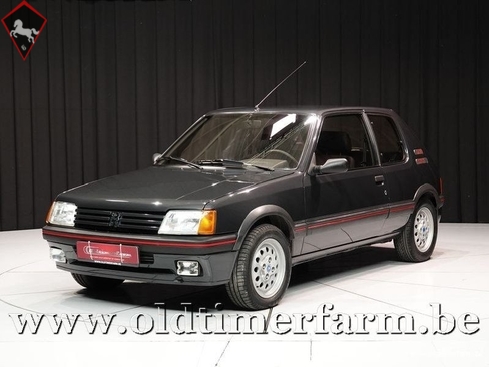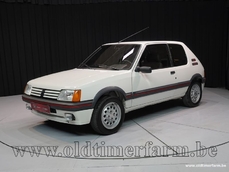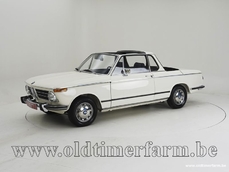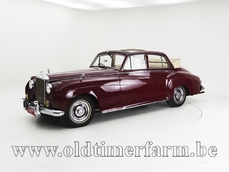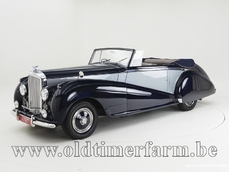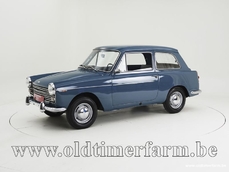Peugeot 205 GTI 1986
General description :
This car is exceptionally serviced in one and the same garage Original unchanged car Dossier with booklets of the car Ready to use, can pass regular or oldtimer MOT Low mileage = 88.830 The Peugeot 205 was produced between 1983 and 1998. The styling of the 205 is often thought to be a Pininfarina design, however Gerard Welter claims it as an in-house; Pininfarina only styled the Cabriolet. Before the 205, Peugeot was considered the most conservative of French cars as Renault and Citroën. The 205 was declined in 5 or 3- doors, and cabriolet. The engines ranged from 954 to 1905 cc. Specifications: Body : length/width/height/wheelbase – cm (in) : 370/157/137/242 (146/62/54/95.3; weight : 850 kg (1874 lb). Engine: front inline 4 cylinders 1580 cc (96.4 ci), manual 5-speed, front-wheel drive; maximum power : 105 bhp @ 6250 rpm. Top speed : 193 km/h; 0-60 mph : 8.60 sec.
http://www.oldtimerfarm.be/en/collection-cars-for-sale/4443/peugeot-205-gti-16-86.php
1986 Peugeot 205 GTI is listed sold on ClassicDigest in Aalter by Oldtimerfarm Dealer for €16950.
Car Facts
Car type : Car Make : Peugeot Model : 205 GTI Engine size : 0.0 Model Year : 1986 Sub type : Sedan Color : Gray Location : Aalter
Sold
Seller Information
Sold
People who viewed this Peugeot 205 GTI also viewed similar Peugeot listed at ClassicDigest
Other cars listed for sale by this dealer
About Peugeot
Peugeot, a renowned French automobile manufacturer, is recognized for producing sensible yet stylish vehicles known for their reliability, comfort, and innovative engineering. Here's an overview of Peugeot's history up to the iconic 205 GTI and its larger siblings:Peugeot: A Sensible Legacy
Early Years and Foundation:
Origins: Founded in 1810 as a family-run manufacturing business, Peugeot initially produced various products, including coffee mills and bicycles.
Transition to Automobiles: The company ventured into automobiles in the late 19th century, producing its first automobile in 1889.
Milestones and Noteworthy Models:
Peugeot 201 (1929-1937):
Significance: Considered one of the early successful mass-produced cars, marked by its reliability and affordability.
Innovation: Featured a robust and economical four-cylinder engine.
Peugeot 203 (1948-1960):
Post-War Success: A symbol of the company's resurgence after World War II, known for its durability and comfortable ride.
Technical Advancements: Introduced independent front suspension and hydraulic brakes.
Peugeot 404 (1960-1975):
International Recognition: Enjoyed global success, lauded for its reliability, ruggedness, and stylish design.
Variants: Available as a sedan, wagon, and convertible, becoming an emblematic Peugeot model.
Peugeot 205 (1983-1998):
Cult Classic: The iconic 205 became a symbol of Peugeot's excellence in the small car segment, offering versatility, practicality, and spirited driving dynamics.
205 GTI (1984-1994): The GTI variant gained legendary status, acclaimed for its sporty performance, handling, and driving experience.
Legacy and Innovation:
Engineering Excellence: Peugeot became synonymous with technological innovation, embracing advancements in engine technology, safety features, and design aesthetics.
Reliability and Durability: Known for producing cars with a reputation for reliability and minimal maintenance, establishing trust among consumers.
Larger Siblings and Family Heritage:
Peugeot 305, 405, and Beyond: Peugeot's larger models, like the 305 and 405, carried forward the brand's reputation for comfort, reliability, and practicality.
Family Traits: Maintaining Peugeot's commitment to quality, these larger models offered a blend of comfort, durability, and European elegance.
Conclusion
Peugeot's journey from its early days to the iconic 205 GTI and larger models like the 305 and 405 reflected a commitment to engineering excellence, reliability, and a sense of practical luxury. The brand's legacy of producing sensible yet stylish cars, often requiring minimal maintenance, solidified its position as a trusted name in the automotive world, particularly during the 20th century.
